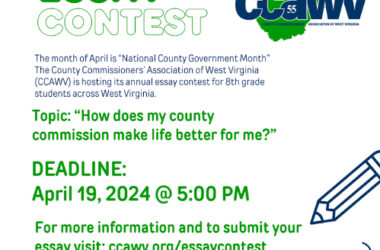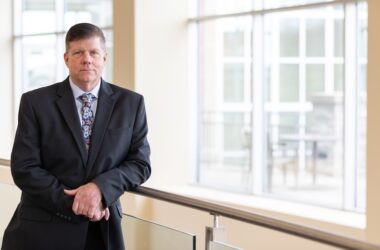Pledge marks largest philanthropic gift in Antero’s history and serves as example of ‘Investing in the Next Generation’
WV Press Staff Report
WHITE SULPHUR SPRINGS, W.Va. – Antero Resources has pledged a $4 million donation to WVU’s Benjamin M. Statler College of Engineering and Mineral Resources.
Paul Rady, president and CEO of Antero Resources, announced that his company’s $4 million donation represents “the largest philanthropic gift in our company’s history.”

Antero’s announcement came at the recent West Virginia Chamber of Commerce’s Annual Meeting and Business Summit and served as the opening for a discussion on “Investing in the Next Generation” that that included Presidents Gordon Gee of West Virginia University (WVU), Marty Roth of the University of Charleston (UC), and Jim Nemitz of the West Virginia School of Osteopathic Medicine (WVSOM).
While accepting the donation, WVU President Gordon Gee said, “I think Antero is one of those quiet companies that has a big impact… It is unbelievable what you have done, and the best is yet to come.”
Ben Williams, executive director of Government Relations for the College Board, moderated the discussion.
Williams asked President Nemitz what WVSOM is doing to invest in the future.
“One of the things that I learned during COVID, and now post-COVID, is that you’ve got to take care of your students,” Nemitz said. “What I’ve learned is that they need care just like everybody else.”
“[WVSOM invests in] providing resources to enable our students to be the most successful medical students – and, ultimately, successful physicians who serve this state and throughout Appalachia,” Nemitz continued. “The other types of investments […] I’m in the process of growing our research enterprise.”
Nemitz explained that competition amongst students to secure residency positions in a limited market has necessitated the need for a more robust research enterprise system.
“Research has become a deciding factor for getting into quality residencies,” Nemitz said. “I’m very thankful to the governor, and thankful to the legislature for funding us to grow our research enterprise. I’m a professor of anatomy. What I learned in the classroom is you create the environment for success for the student. That’s what WVSOM does, we’re creating the environment so that our students can be successful, and ultimately be serving in your communities.”
Williams then asked UC President Roth about the ways his university is making students aware of, and preparing them for, the workforce needs of potential future employers.
“Like we’ve heard throughout the summit, healthcare is so vital to the State of West Virginia, and to our region,” Roth replied. “It’s the largest employment vertical in the state. The University of Charleston, like many other institutions, is deeply committed to adding new healthcare programs to address the needs of the services that we all want in our communities.”
“We’ve launched a new nurse practitioner program, and new programs in occupational therapy,” Roth continued. “We’re excited about partnering with Vandalia Health and CAMC (Charleston Area Medical Center) on a nurse anesthesia program. Also in the pipeline, we have a new physical therapy program.”
Gee talked about the challenges facing higher education, both at WVU and nationwide, as well as the academic transformation underway at his university.
“We are in an existential crisis in higher education,” Gee said. “We have serious financial issues. It’s not simply support from the public, it’s overcharging tuition and a variety of other things that we have extended beyond our boundaries.”
“The second thing is, in 2008, people stopped having children,” Gee continued. “We have about a 25% demographic-cliff which is occurring in this country, and that impacts this part of the region very dramatically.”
“Universities and colleges have lost the trust and support of the American people,” Gee added. “We’ve got to regain that, and that’s exactly what we’re doing at the university – we’re saying that we are here to serve the people of West Virginia. We will serve our students first and make sure that we listen very carefully. We want to be an institution that is for the people, rather than telling the people what they should think. That is our transformation process.”
Williams next questioned Nemitz about the possibility of their universities working together to overcome potential challenges.
“We have a long history of collaboration,” Nemitz replied. “A lot of it initially was with hospital systems – we work with all of the hospital systems in West Virginia.We polled our students. The number one thing they want (in addition to their medical degree) is a Master’s in Business Administration (MBA).”
“I wasn’t going to dedicate the resources to creating a business school,” Nemitz continued. “We have very fine business schools in this state already. So we collaborated with the University of Charleston. We’ve had a long-time collaboration with them. One of the things in medicine is that it’s a team activity – you have to have interdisciplinary-education.”
“We don’t have a nursing program,” Nemitz noted. “So again, we partnered with UC to be able to do this interdisciplinary-education. That relationship then evolved for us into creating our first dual-degree program. A student will now be able to go to WVSOM for a DO (Doctor of Osteopathic Medicine) degree, add an extra year, and get an MBA from the University of Charleston.”
“It takes schools working together to make this happen,” Nemitz added.
Roth echoed the sentiments expressed by Nemitz, saying, “We really have to keep our thumb on the pulse of who our students are, and what’s important to them.”
“Our core mission is to prepare those students for great jobs – jobs here in West Virginia,” Roth added. “We’re working very hard – all of us as presidents and leaders of higher education – […] to put together strategies to help our students and partners be successful.”
For his final question, Williams asked President Gee, “If you had a crystal ball, where do you see higher education in five-to-ten years?”
“I think you’ll see all kinds of different platforms,” Gee said. “I think you’ll see a whole bunch of different certifications in addition to those in the traditional academic setting. I believe the future of higher education is very bright – I just think we need to get through this moment where we’re looking too much in the rearview mirror, and not enough through the windshield.”










